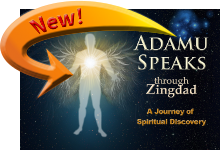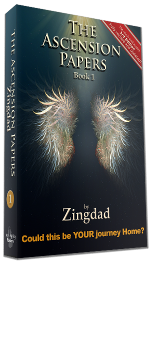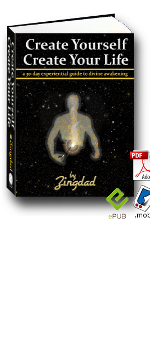There Are No Rules
This real-world reality that we live in has many patterns that appear to reliably repeat. As an example: for as long as humanity has existed, the sun has dependably risen in the east each morning. And, being the pattern-seekers that we humans are, we are quick to notice all such reliable repetitions of events. But it is our drive for safety and security in an otherwise unpredictable world that causes us to try to make rules about these patterns. We don’t need, for example, to try very hard to come up with a rule that goes, “the sun will rise again tomorrow morning”. And this rule-making is not a bad idea. Indeed this process, called learning, is crucial to our survival, both individually and as a species. Think, for example, of the rule that was learned by our ancient forebears that went, “when I strike two flint stones together they seem to always make a spark”. That’s a useful rule! From that rule came the mastery of fire. And upon myriad rules just like that, human civilization was built.
Sometimes we get the rule making horribly wrong: sometimes we attach causality to unrelated things and then you get nutty rules such as, “when a black cat crosses your path then bad luck soon follows”. Superstitions like that arise when our healthy desire to find patterns in the world around us gets attached to faulty observation. The scientific method, and the logical, deductive reasoning that it teaches, rescue us from superstition. Science teaches us to experimentally test the hypotheses that we come up with so as to see if they are true. Perhaps two people should go to the casino, one with a black cat and the other with a multi-coloured parakeet. Then we can test and see: is the black-cat owner statistically any less lucky than the guy with the parakeet on his shoulder? I jest, but you get the idea: science teaches us to find the rules of our reality by looking for the things that seem to be consistently true. It’s not good enough if it appears to be true once or twice. Then it’s just a fluke. Having bad luck after seeing a black cat on two or three occasions cannot be called a rule if you do not have bad luck on five other occasions when you also saw such a cat. It’s also not good enough if something only happens under specialised circumstances as it might then be due to other factors. Having bad luck when you see a black cat BUT ONLY when you play tennis might have more to do with the fact that you are rotten at tennis!
Science eliminates the faulty deductions which result in superstitions by requiring that a hypothesis be shown to be true for anyone, anywhere who conducts the same experiment. And we must exclude other factors that could confuse the process. Only then can one propose a hypothesis as a theory. And only when other scientists have subjected that theory to their own experimental testing does it begin to gain general acceptance.
And here comes the important bit: even when we have a solid, generally accepted scientific theory… even then it is not a “rule”… even then all we have is a carefully identified and described pattern. Good science does not talk about “scientific fact”. That’s lay-man speak. There are no “scientific facts”, there are only, at the very best, scientific theories that continue to stand up to the very best scrutiny of experimentation and peer-review. Non scientists get confused by this word, “theory”. They think it means something like “a random untested idea” as in “no, man, that just your theory”. Non-scientists seldom appreciate the degree of rigour that goes into the development, refinement, testing and verification of any currently accepted scientific theory. The point I wish to make here is that science’s greatest strength is, in my view, its willingness to change and adapt as new evidence comes to light. To hold rules as lightly as possible and to admit that “this is the best explanation that we have about this at this time – this is our very best theory.” To admit unashamedly that the best we can do at any point is to identify and describe the patterns that we observe around us.
And what about the exceptions? What about those absolute rules and constants of our reality that never change? When we believe we have found such rules then, it is my firm contention, all we are noticing is the miniscule scale of our perception. Perhaps we have simply confused a slow changing pattern for a static one. As a simple example: though we might think we have a rule that says “the sun will always rise in the east in the morning”, indeed, the time will come when the sun will NOT rise again. Everything changes. Our best current theory about this is that the sun will, in a few billion years, expand into a red giant and then slowly decay and lose mass and go dark. In the expansion phase it will engulf and consume the earth. From that point on it can certainly be said that the sun will never again rise from the earthly perspective. So there is no eternally valid rule that the sun will always rise in the east every morning – though it might very well seem as if that is the case due to the limits of our perspective.
Though it gets difficult to argue and even more difficult to prove, I very much do believe that this is true for all the rules and constants that science has found: these items are only constant under the specific conditions in which we now find ourselves and there are other perspectives under which they will be different. If, under the current conditions we are observing, there seems to be a rule or a constant that we can describe, then that is the present theory. If we are able to observe long enough or sufficiently broaden or deepen our observation, new information will always be arrived at. When it does the theory, and its related constant, will have to expand, change or indeed, be replaced.
It does happen, of course, that scientists themselves sometimes get confused about this. Even the greatest scientists are only human after all! So it does sometimes happen that they become SO enamoured of their pet theories that they become attached to them and unwilling to let them go when it is time to do so. And then, in those instances, with those scientists, there is a transformation. That is when good science transmogrifies into bad religion. Instead of there being a theory that is open to testing and transformation when new evidence arises… there is a stubborn, dogmatic belief. If the belief is challenged then the scientist in question feels personally attacked and he defends with all the fire and vigour of the religious fanatic. Moving the scientific debate forward then becomes more about politics than about science. For this reason it is sometimes said that science moves forward, not by discovery after discovery, but by funeral after funeral. Sadly, often old scientists must die before new science can be allowed.
And the point of this tangent about science? What I am trying to show is that it is in our nature to seek and discover the patterns of life. This is a good and healthy thing to do. It results in our becoming ever more adept at living. We figure things out and get smarter. But it is very easy to get lost and confused on the road to the discovery of the patterns. The first obvious trap is the superstition trap. The trap of poor observation leading to misidentification of the pattern. The second trap is far less obvious and even well seasoned travellers on the pattern-seeking road fall into this trap. It is the dogma trap. The trap of thinking that a pattern that you have found is a fixed, final and unbendable rule. You see, even here on earth THERE ARE NO RULES. Nothing at all… not one single thing anywhere ever… is unchanging. There is nothing that one cannot take a different perspective upon. And so the very best way to proceed is to move from “best possible theory” to “best possible theory”. To accept that the patterns that we find are, at best, only our current, temporary perspective. That “this is the way things seem to be right now”.
And if that is the best approach that we can take to explaining, describing and understanding the “real world” of our own physical universe, why do we think it should be any different in the spirit world beyond?
It should not! In fact it is my discovery that this notion of “no rules” is even more true of the spirit world. And in order to tell you about that, I am going to share with you my second important discovery from my work in Soul Re-Integration:
IT’S ALL ONE BIG CONTINUUM!
{jcomments off}






